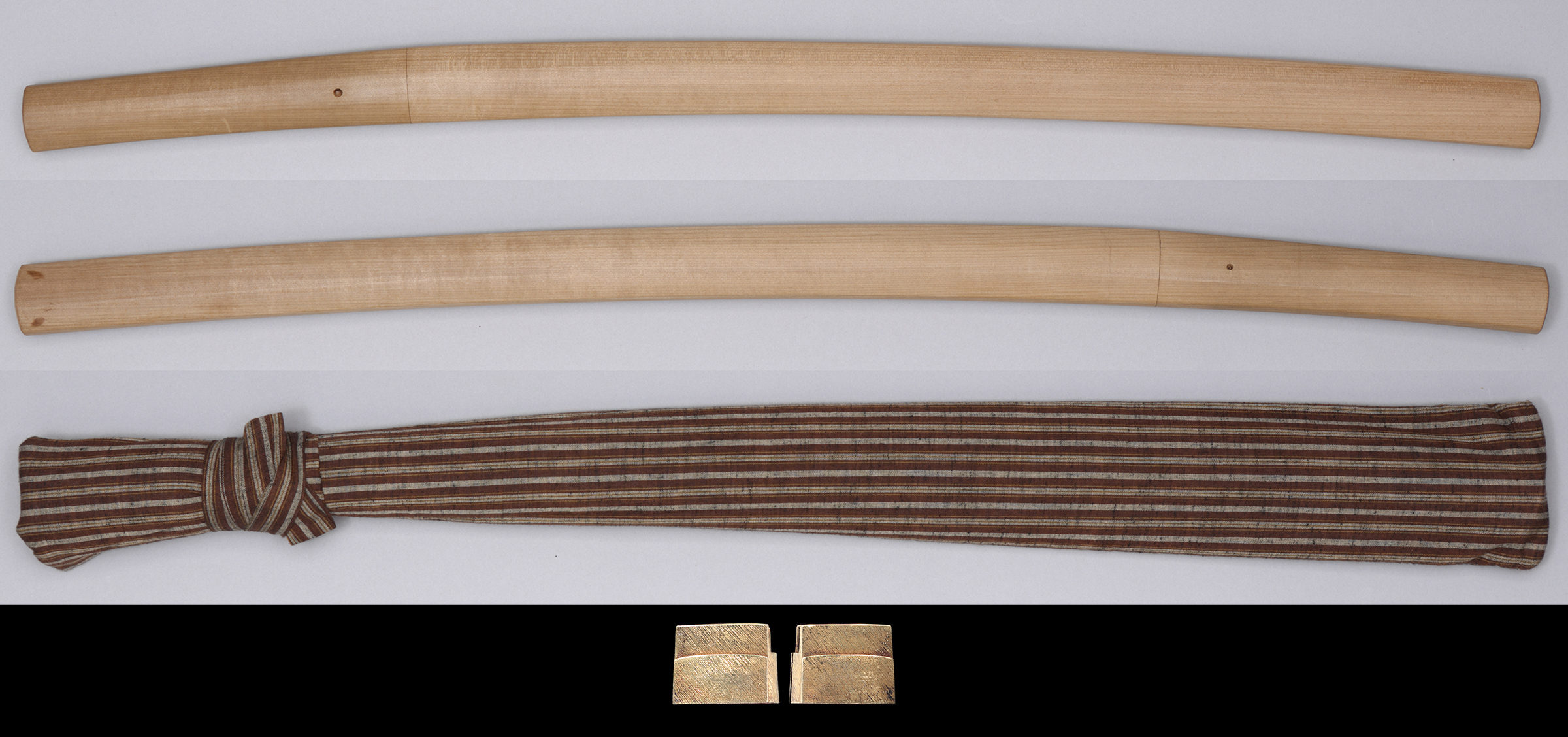
  |
Wakizashi, Shirasaya |
Tsuda Echizen-no-kami Sukehiro
|
[ Signature ] omote : 津田越前守(following part cut) ura : -寛文十二年八(following part cut) |
[ Size ]Blade length: 58.7cm (1 shaku 9 sun 3 bu 7 rin), sori curvature: 0.7cm (2 bu 3 rin), Base width: 3.13cm, Base thickness: 0.70cm, Tip width: 2.24cm, Tip thickness: 0.48cm, makugi-anan Peg holes: 3, Blade weight: 577g, shirasaya scabbard total length: 86.2cm |
[ Period ] Edo, circa Kanbun 12(1672) |
[ Province ] Settsu |
 |
[ Feature ] [ Conditions ] The blade shows signs of old sharpening, with some minor rust and pitting. There are several areas of decay. |
[ Attachments ] habaki(suaka-ji, gold foiled, double), shirasaya, bag of shirasaya and 保NBTHK hozon paper (issued on 31st May Reiwa 6(2024)) |
 |
[ Item number ] A011025 [ Price ] SOLD |
Please order by E-mail.

About TOUKEN KOMACHI
BACK
TEL +81-(0)3-5284-9014/ FAX +81-(0)3-5284-9043____E-mail : s_tsukada@toukenkomachi.com
Copyright © 2009- Touken komachi All rights reserved. |